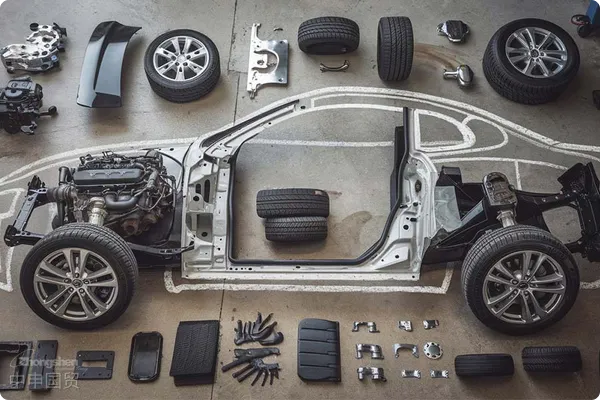- Shanghai Zhongshen International Trade Co., Ltd. - Two decades of trade agency expertise.
- Service Hotline: 139 1787 2118

As a senior consultant who has been deeply engaged inforeign tradeservice expert with 20 years of industry experience, this article will systematically analyze the core points of clothingExport RepresentationAs a seasoned practitioner with 20 years of experience in the field, we deeply understandAutomotive partsThe compliance of imports is directly related to the security of a company's supply chain and cost control. As a core component involving vehicle braking safety, the import of brake boosters must strictly adhere to national quality supervision and certification requirements. This article will analyze brake boosters from a practical perspective.Import RepresentationKey points in license processing to help enterprises avoid risks and improve customs clearance efficiency.
I. Regulatory Framework for Brake Booster Imports
1.Product Classification and HS Codes
The brake booster falls under "Brakes and Their Components for Motor Vehicles" (HS Code 8708.39) and must simultaneously meet the following requirements:
- Compulsory Product Certification (CCC Certification)
- Quality and Safety Commitment Letter for Imported Motor Vehicle Components
- Customs Commodity Inspection (must provideIt is recommended to verify through the following methods:Books, Material Reports
2.Core License Types
| Certificate Type | Issuing Authority | Validity Period | Key audit items |
|---|---|---|---|
| CCC Certification | CNCA Certification Center | 5 years | Factory audit, product type testing |
| Import license | Department of Mechanical and Electronic Products, Ministry of Commerce | Single - use Valid | Certificate of Use, Import Quota |
| Environmental Access Certificate | Ministry of Ecology and Environment | 2 years | Heavy metal content, material recyclability |
II. Breakdown of the Entire License Application Process (Taking EU Imports as an Example)
Phase 1: Preliminary Technical Document Review
- The EU exporter needs to provide:
- ECE R90 Certification (Special Certification for Braking Components)
- ISO 16949 System Certification (Automotive Industry Quality System)
- Original factory test report (must include 100,000-cycle fatigue test data)
Phase II: Domestic Compliance Conversion
- Key Steps:
- Translate EU standards into GB 12676-2014 "Technical Requirements for Automotive Braking Systems"
- Through comparative testing conducted by the China Automotive Technology and Research Center (CATARC)
- Application for Import Quota (Annual Verification of Mechanical and Electrical Products Import Catalog)
Phase 3: Customs Declaration Coordination
- To be submitted simultaneously:
- Certificate of Origin (must include endorsement by customs of an EU member state)
- Pre-shipment inspection certificate (issued by SGS/BV or other authorized institutions)
- Import Safety Responsibility Commitment Letter (Signed by Legal Representative + Company Seal)
III. Five Major Risk Points in Practice and Their Countermeasures
1.Incorrect product classification
- Case: A company mistakenly declared a vacuum booster (8708.39) as a pneumatic device (8412.31), resulting in a fine of 300,000 yuan.
- Countermeasure: Apply for a Customs Pre-classification Ruling in advance.
2.Certification standard conflict
- Differences between EU ECE R90 and Chinese National Standard GB 12676 in hydraulic sealing test methods
- Solution: Entrust a third-party laboratory to conduct supplementary testing on the discrepant items.
3.Intellectual Property Infringement
- Key verification of the authorization chain for OEM parts of brands such as TRW and Bosch (brand owner's distribution authorization letter must be provided).
4.Declaration of Eco-friendly Materials
- The heavy metal content of the new carbon fiber composite material must comply with the "Requirements for Prohibited Substances in Automobiles" (GB/T 30512).
5.Logistics lead time management
- It is recommended to adopt the "pre-license review + bonded warehousing" model to avoid demurrage fees (Shanghai Port case: pre-review saves 14 days in customs clearance time).
IV. In-depth Analysis of the Value of Import Agency Services
Professional agencies can provide clients with triple protection:
Compliance cost optimization
- Leverage AEO Advanced Certification to enjoy priority inspection (inspection rate at Shanghai port reduced from 5% to 1.2%).
2.Logistics Cost Control - Integrate port and inspection agency resources to shorten the certification cycle (Case study of German imports: Overall cycle reduced from 120 days to 75 days).
3.Risk Early - Warning System - Dynamically monitor new policies such as Announcement No. 68 of the General Administration of Customs and adjust declaration strategies in advance.
Conclusion
The import of brake boosters is not merely a logistical operation, but a systematic project involving technical regulations, quality control, and compliance declarations. Choosing a service provider with hands-on experience in automotive parts imports can effectively reduce corporate compliance costs and ensure the safety and stability of the supply chain. For customized import solutions, feel free to contact our technical team for an in-depth diagnosis.
Related Recommendations
? 2025. All Rights Reserved. Shanghai ICP No. 2023007705-2  PSB Record: Shanghai No.31011502009912
PSB Record: Shanghai No.31011502009912









